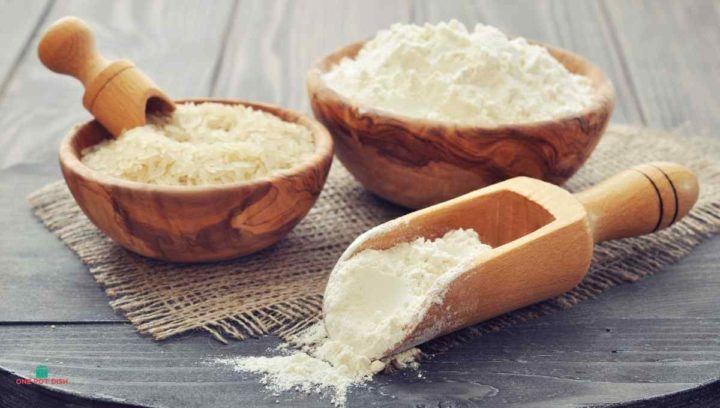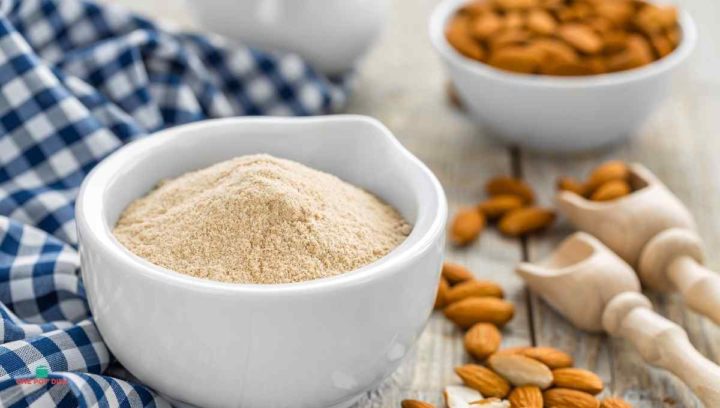Tapioca flour, also known as tapioca starch, is a gluten-free substitute for regular flour. It has become very popular because it helps those who suffer from allergies or intolerances to wheat.
Tapioca flour comes from the root of the cassava plant. Cassava is native to tropical areas of Africa, Asia, South America, and Central America. The starch extracted from the root is called tapioca starch.
Tapioca flour is widely used in baking, especially cakes and bread. It also makes great snacks such as chips and crackers. Plus, Tapioca flour can be used to thicken sauces.
This is one of the types of flour that is a versatile ingredient that may be used in a variety of dishes and beverages. However, do not worry if you do not have any on hand because there are many tapioca flour substitutes that you can use. A few of which are all-purpose flour and cassava flour.
Read more below to know the best tapioca flour substitute in your favorite recipes.
All-Purpose Flour
As the name implies, all-purpose flour can be used in any dish as a replacement for tapioca flour. It is simply “flour,” “polished flour” or “refined flour.” And because all-purpose flour has half the thickening power of cornstarch, it is present in a lot of the same dishes, such as fruit pie filling or thickened with butter to make a heavier consistency for gravies and soups.
The distinction is that when tapioca is used in a recipe, the food will be glossy, but when all-purpose flour is used, it will have a matte finish. Replace all-purpose flour with the same amount of tapioca flour. To avoid an unpleasant floury flavor, be sure to allow the starchy liquid to cook through completely.

Cassava Flour
Cassava flour is similar to tapioca flour, but it contains less protein than tapioca flour. Because of this, it is often used in savory recipes and gluten-free baking, where the addition of protein would cause the mixture to taste too sweet. Cassava flour is made from the starchy portion of the cassava root.
Depending on the recipe, you may detect a mild nutty flavor in tapioca flour. It’s also considerably more nutrient-dense and flavorful than other gluten-free flours.
You may freely interchange them in most baked recipes because they both have the same amount of starch. However, this type of flour has a greater fiber content, which means it has slightly more thickening power than potato starch. When making sauces with it, be cautious since it has a higher fiber content than potatoes starch.
Rice Flour
Rice flour is another common substitute for replacing tapioca flour. Rice flour is made from rice bran, which is the outer layer of the grain. Rice flour is much lighter than tapioca flour and has a subtle sweetness. It is best used in desserts like cookies and brownies, where its lightness helps prevent the cookie from becoming soggy.
If you want to bake something that tastes just like a cake, then using rice flour is probably the best choice. But if you want to create a crispy crust, then tapioca flour is better suited for the job. You can use 1/2 tablespoon of rice flour as a substitute for 1 tablespoon of tapioca flour.

Potato Flour
Potato starch or potato flour is one of the most commonly used substitutes for tapioca flour. Potato starch is derived from the potato, a member of the nightshade family. The starch comes from the inner part of the potato. This type of starchy flour has a very bland flavor, so it doesn’t add much to your dish.
When substituting potato starch for tapioca flour, you’ll need to decrease the quantity by about 50%, depending on the type of dish you are cooking. For example, use an equivalent amount if you are making sauces. But baked and fried food should only have 1/2 of the equal amount on the original recipe that calls for tapioca flour.
Cornstarch
Cornstarch is another popular substitute for tapioca flour because it provides a nice smooth consistency. Cornstarch is made from the corn kernel, and it does not contain any proteins or fats. As such, it is ideal for baking because it won’t affect the structure of the finished product, and it also works as a good thickening agent.
Why Do People Snack On Cornstarch
The main drawback of using cornstarch instead of tapioca flour is that it will make your baked goods sticky and chewy texture. So, be careful when adding cornstarch to recipes that require a dry batter. If you do decide to use a tablespoon of cornstarch, try to reduce the amount by half in a recipe that calls for tapioca flour.
Chickpea Flour
Chickpeas are native to India and Pakistan, though they were introduced to Europe during the Middle Ages. Chickpeas are high in protein and low in fat. They’re also rich in minerals like iron, zinc, magnesium, potassium, phosphorus, copper, and manganese.
This type of flour has a smooth, earthy, nutty taste that might need to be balanced with sugar or icing in desserts, but it does not change the flavor or texture in any way when used as a suitable alternative to tapioca flour. Chickpea flour and tapioca flour have almost identical absorption properties and consistency. Hence you can use the same amount as the original recipe calls.

Almond Flour
Almonds are a great source of dietary fiber, vitamins, minerals, and antioxidants. Almond flour is made from ground almonds and contains no gluten. Its mild almond flavor makes it perfect for baking cakes, muffins, and other sweet treats and can easily be used as a replacement for ground Tapioca.
Lupin flour
Lupin flour is a gluten-free flour that’s made from the seeds of the Lupinus angustifolius plant. It’s similar to quinoa flour in terms of nutritional value. Lupin flour is often used in vegan baking due to often being supplied as organic as well.
Arrowroot powder
Arrowroot powder is a natural thickener that’s extracted from the root of the arrowroot plant. Arrowroot powder is often used in Asian dishes where it acts as a binding agent.
It’s important to note that arrowroot powder is not interchangeable with tapioca flour. You cannot simply replace the latter with the former. In fact, there are some differences between them. For instance, arrowroot powder is more of a thickening agent than tapioca flour.
Teff flour can also be used.
Other Considerations For Tapioca Flour
Sorghum flour is a byproduct of the brewing industry and has been used as animal feed for many years. It is also an important source of starch in countries where it is grown (e.g., China). If this is all you have then it can be used but at half the amount,
- Coconut Flour
- Yeast extract
- Potato starch
- Rice flour